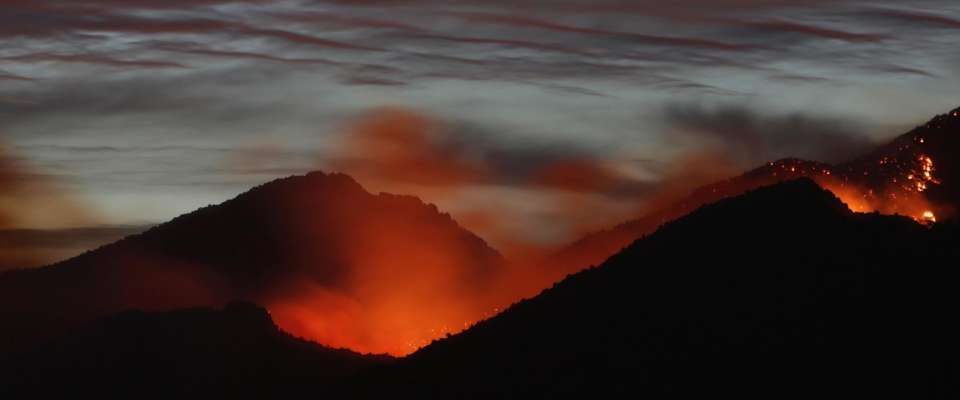
Wildfire Safety & Prevention
TEP works year-round to reduce the risk of devastating wildfires that can threaten public safety, destroy property and cause power outages, reducing the reliability of electric service for customers.
We continually inspect, maintain, repair and upgrade our equipment. We patrol and manage transmission line routes to ensure that vegetation does not encroach on electric infrastructure. We also monitor wildfires near our equipment and work closely with state and federal authorities during wildfire events.
Here are other measures TEP uses to reduce wildfire risks and improve safety.
Prevention
Most of TEP’s service territory is located in urban areas where the company maintains an active vegetation management program. Crews work full-time throughout the year to trim trees and other vegetation that could create fire risks near lower-voltage distribution equipment.
Some transmission facilities are located in forested areas. TEP uses several preventive measures around transmission facilities.
- Vegetation is cleared away from transmission lines and structures in transmission corridors and trimmed on a five-year cycle. TEP will maintain clearances more than 300 feet wide in some areas. TEP coordinates access with the U.S. Forest Service for continual vegetation management efforts.
- All transmission facilities are patrolled by helicopter to identify equipment in need of repair and trees in need of trimming.
- Extra high voltage transmission facilities, including 500 kilovolt (kV) and 345 kV lines, are patrolled by ground inspection at least once every five years.
- High voltage transmission facilities, including 138 kV, 69 kV and 46 kV transmission lines are patrolled by ground inspection at least once annually.
- Drones are used to identify potential concerns in hard-to-reach areas.
Preparation and Response
- TEP maintains strong relationships with the Bureau of Land Management, the U.S. Forest Service, the Arizona State Land Department, tribal agencies and private landowners to facilitate communication about potential hazards and active wildfires.
- TEP uses multiple state and federal wildfire and emergency management websites to identify potential threats. Data is imported into TEP’s geographic information system so that supervisors are alerted to new fire threats as they are reported.
- TEP employees review Arizona wildfire forecasts that predict the potential severity of the fire season. They also attend regional fire preparedness meetings and participate in wildfire response training in Arizona and New Mexico, where some transmission facilities are located.
- TEP stations employees at incident command sites to coordinate with firefighting agencies when wildfires burn in close proximity to company resources.
